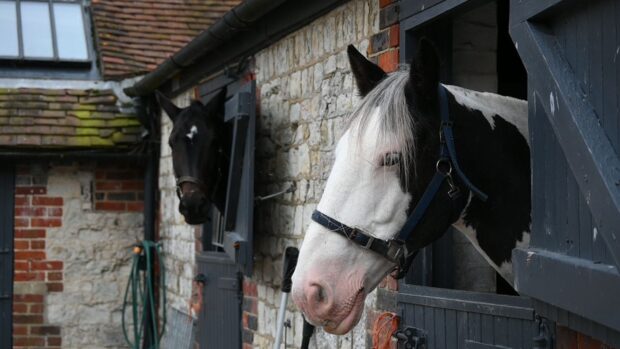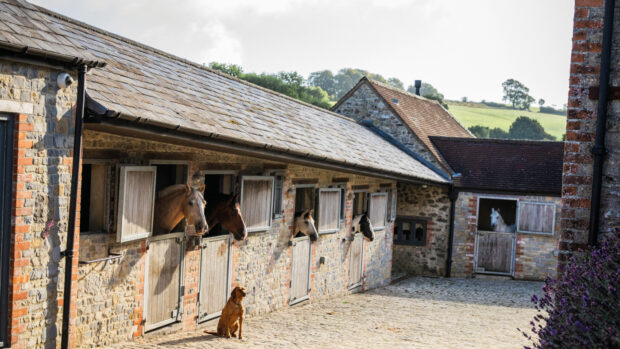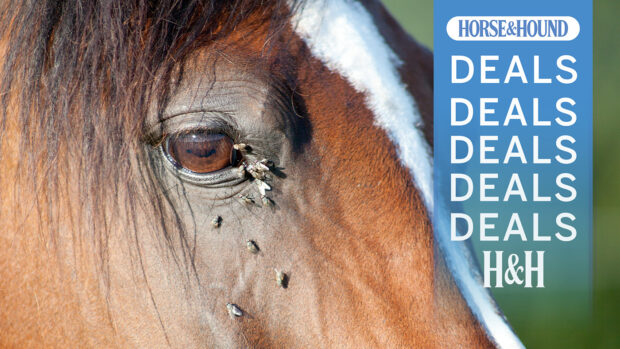Riders love sunshine, but the rise in temperature can impact on your horse. Make sure his time in the sun is as enjoyable as possible with the following handy advice
You might relish the warm summer months — longer days, warmer mornings, fewer layers of clothing — but is your horse?
An increase in temperature impacts on him, too.
Many riders report that their equines become easier to work with and more rideable in the summer, because they spend more time turned out in the field and the sun acts as a natural calmer. However, too much heat can lead to dehydration, lethargy, diarrhoea and sometimes even colic.
How to enjoy the sunshine in a way that is kind to your horse
1. Provide shade
Your horse needs to be able to escape the sun, so if he is turned out all day, make sure there is some form of shade either under trees or in a shelter. This will help him to escape those pesky flies, too.
2. Adapt your routine to stay cool
Riding first thing in the morning or in the evening is a good time to exercise your horse and avoid the worst of the heat. Consider turning out at night and keeping him in during the day instead.
3. Clip those with thick coats
Many older horses and ponies, and those suffering from Cushing’s disease, struggle to lose their winter coat and a long, thick coat will hold heat and make it harder for them to cool down. Lend a helping hand by clipping them, but consider buying a summer turnout rug to protect them when it rains. A fly sheet will also help to keep flies off.
4. Don’t burn
Just as a human’s skin is susceptible to UV rays and irreversible damage, horses can burn, too. The delicate pink flesh marks that some horses have on their nose, or unpigmented tissue around the eye, are particularly susceptible. “Excessive sun exposure can be extremely damaging,” says Emily Haggett MRCVS, from Rossdales Veterinary Surgeons. “Skin cancer is caused by a mutation in the genetic material within the cells.
“Many factors contribute to this, but chronic inflammation from exposure to UV light increases the chances of a mutation occurring. The effects of sunburn in horses are less well documented than in humans, but it is known that development of squamous cell carcinoma [SCC], a type of skin cancer, is much more common in horses that have experienced excessive exposure to UV radiation.”
SCC commonly affects sites where there is a junction between mucous membranes and normal skin such as the eyes — especially the third eyelid — nostrils, vulva and prepuce.
“An early sign is often the development of small, raised, cauliflower-like masses or areas of ulceration. Early removal is very effective, so seek veterinary advice if you have any concerns about skin changes in these areas,” urges Emily.
“Preventative measures include applying sunblock to white or non-pigmented areas, avoiding turnout at the hottest times of the day and using fly masks or light rugs with UV protection.”
5. Clean the air
Seasonal Recurrent Airway Obstruction (RAO) is triggered by an allergy to pollen spores in the air. This is similar to COPD, an allergy to dust or spores in hay and bedding and shows the same symptoms of heavy breathing, wheezing and lack of energy, possibly with a cough or runny nose as well. RAO causes the tissues and mucus lining the horse’s airways to thicken and narrow the diameter of the tubes, which means less air can be inhaled and exhaled with each breath. It is a painful and stressful condition for horses, and if you suspect that something isn’t quite right, you must consult your vet.
6. Keep feet strong
While muddy conditions in the winter lead to soft hooves, drying summer weather leads to brittle and cracked hooves, which are equally as problematic. Ensure hooves receive a regular amount of moisture on a regular basis, and keep visits from your farrier consistent, even if your horse is unshod.
7. Watch the diet
More turnout and warmer climes means horses are eating better quality grass for longer periods, but using fewer calories to keep warm. Consequently weight gain is inevitable and laminitis becomes a risk. Monitor his waistline using a weigh tape and keep a record of it, which will help you spot any changes. Evaluate the horse’s work regime compared to his diet and adapt it accordingly throughout the summer.
Like this? You might also enjoy reading these:

Laminitis: how to spot the signs, plus treatments and ways to prevent it
8. Be field wise
Extra time in the field means grass management — poo-picking and not over-grazing paddocks — is important, as is an effective worming programme. Speak to your vet about appropriate parasite control, including regular worm egg counts. Also remove any toxic plants that appear in summer pasture.
For all the latest equestrian news and reports, don’t miss Horse & Hound magazine, out every Thursday



